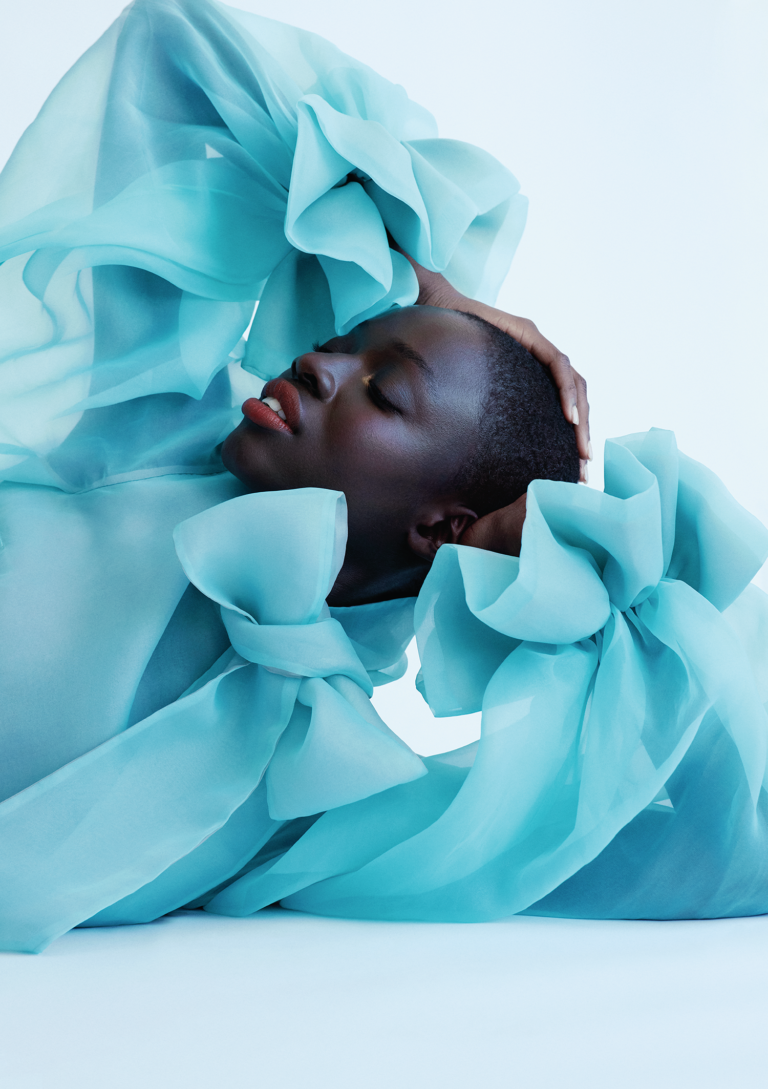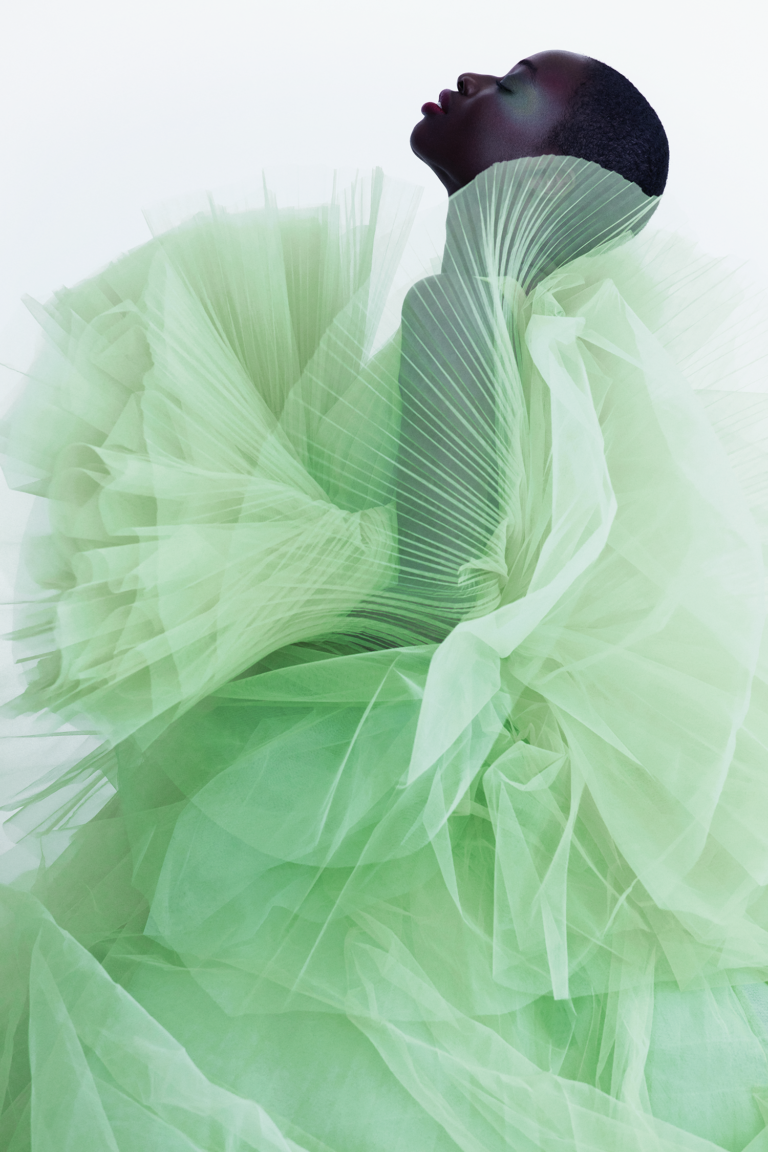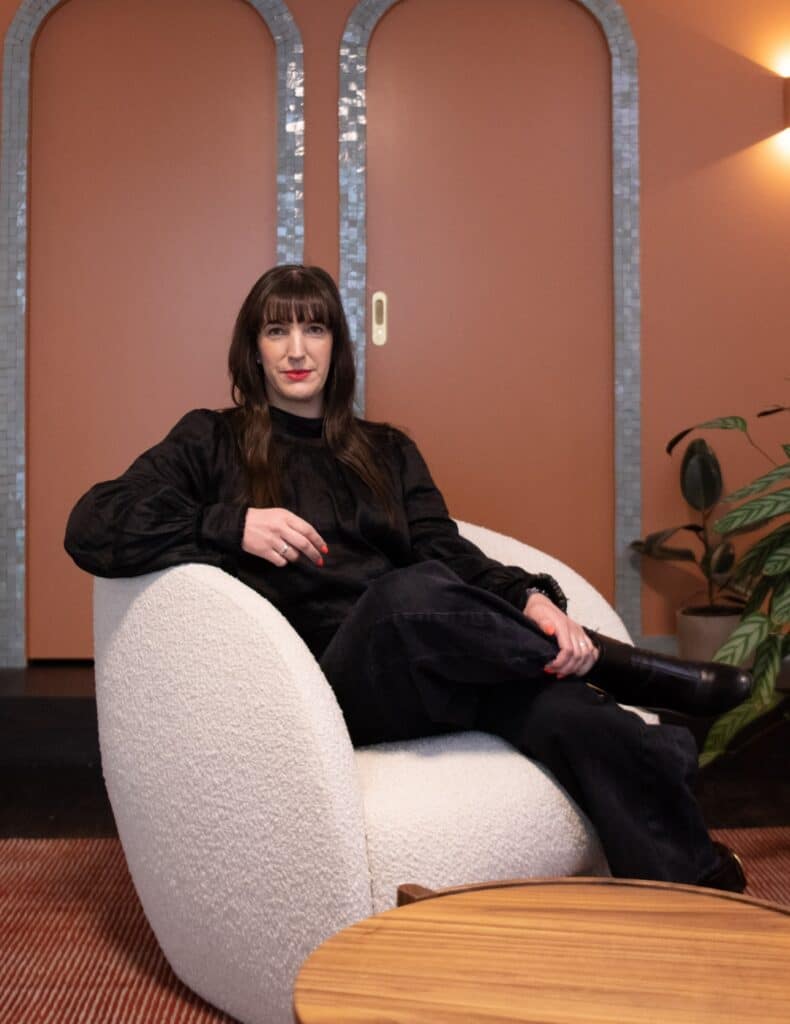
When you’re feeling low, where do you look to for respite? For many it may be a holiday, others a good book, but for some, reprieve may come in the form of a piece of clothing that lifts their spirits and makes them feel good within themselves. Given the many challenges that the past year has posed, as well as the ensuing emotional rollercoaster, our wardrobes have been along for the ride with us — whether or not we are aware of it.
Our mood plays a key role in what we reach for in our closet each day, so when the chips don’t fall in our favour, do we go high or low? Do we seek solitude in a pair of sweatpants, or put on our brightest blouse in an attempt to inject a jolt of optimism into our day?
Quarantines throughout 2020 and into the new year created a pressure cooker scenario of sorts when it came to daily dressing. Pick your sartorial emotional support style: those who seek comfort, or those who seek escapism.
By now you’ve probably caught wind of the meteoric rise of activewear. According to a report published by Spanish investment firm Comprar Acciones, the global market was estimated to be worth USD$353.45 billion in 2020. The continued popularity of leggings and sportswear combined with our spending more time than ever at home has paved the way for the ultimate in athleisure: the two-piece tracksuit.
Clickbait and social media favourites such as Gigi and Bella Hadid, and the Kardashian clan along with Kanye West’s luxury Yeezy releases have catapulted the humble sporty co-ord to centre stage. Closer to home, Maggie Marilyn’s sumptuous ‘Somewhere’ line offers us GOTS certified organic cotton sweatshirts and trackpants while Juliette Hogan’s ‘JH Lounge’ collection of “go-to basics” features soft knit pairings that “straddle the gap between on and off-duty”.
The joy of a tracksuit is found in slipping into its soft, stretchy fabrics, which should be free of any restrictive zips, buttons, or form-fitting panels. Putting on a pair might just be the emotional equivalent of a warm, reassuring hug.
On the flip side, along with the first wave of global lockdowns in March last year, so too came a slew of headlines promoting the value of dressing up. Sarah Spellings of The Cut reported ‘Dressing Up Is Making Me Feel Better’, British Vogue’s Kate Finnigan wrote a piece titled ‘Why Dressing Up With Nowhere to Go Is Okay – Even Essential’, and Elle UK published a piece by Susie Lau that read ‘Sequins In Lockdown: How Coronavirus Liberated My Wardrobe’—spot the theme.
Professor Carolyn Mair PhD, who is one of the most notable names in the field of fashion psychology, joined the conversation too. Now a consultant, she was responsible for developing the master’s and bachelor’s programs in the psychology of fashion at the globally lauded London College of Fashion. In May 2020 Mair wrote, ‘In a Crisis, Looking Good Really Can Help Us Feel Good’ , which was published online by The Business of Fashion, in which she argues how the power of clothes impacts us in times of crisis.

“Our outfits can also signal how we feel emotionally. But fashion doesn’t just reflect our inner selves; it can also have psychological effects that actually change how we think, feel and act. During lockdown, it’s easy to sit around all day in pyjamas, but getting up, getting showered and getting dressed goes some way towards taking control, restoring a sense of normality and lifting mood,” says Mair.
Regardless of whether dressing for comfort or fantasy sparks joy for you in the midst of tough times and beyond, one thing remains the same—there is a sense of personal connection with the garment you are choosing to put on.
Reporting on the fall 2021 international runway circuit, Steff Yotka, American Vogue’s fashion news & emerging platforms editor, wrote that in her attempt to find a common thread in the “wildly different” collections on offer, “one idea reverberates: No matter the expression, we crave clothing that feels close to us.”
The interplay between psychology and how we choose to dress is a concept largely left to be explored by intellectuals, or perhaps marketers looking to use consumer psychology as a tool to boost sales. But what about the personal perspectives on this relationship, which are unique to each individual?
A 2012 study by Hajo Adam and Adam D. Galinsky published in the Journal of Experimental Social Psychology introduced the term “enclothed cognition”. The pair studied participants’ responses to a garment laden with associations—the humble lab coat. To one group the lab coat was described as a doctor’s coat; to another, a painter’s coat. Those who wore the doctor’s coat experienced “increased sustained attention” while performing a test task. In short, their preconceived notions towards the garment actually had an impact on how effectively they were able to perform.
Speaking on the above study, aforementioned Professor Carolyn Mair PhD commented in a 2017 piece exploring the term ‘dopamine dressing’, which was published by The Guardian, that “when people believe in the symbolic meaning of their clothes, it can affect their cognitive processes, and part of those are your emotions.”
Another leader in the field of fashion psychology, Professor Karen Pine of the University of Hertfordshire conducted a study in 2012 titled ‘Happiness: it’s not in the jeans’. She found that the strong link between clothing and mood means your best bet is to reach for clothes that you associate with feeling happy, even if you’re currently feeling low, in order to pull yourself out of a slump.
“This finding shows that clothing doesn’t just influence others, it reflects and influences the wearer’s mood too. Many of the women in this study felt they could alter their mood by changing what they wore. This demonstrates the psychological power of clothing and how the right choices could influence a person’s happiness.”
The process of getting dressed each morning needn’t be overly intellectualised. But there’s a lot to be said for mindfully curating your wardrobe into a toolkit that—much like those who put on a “doctor’s” coat and were better at focusing — contains pieces that can be used to boost certain skills or attributes you may need on any given day or occasion.
Two key factors come into play here: your senses and the psychological associations that each garment holds for you personally, which in turn can impact how you think, feel, and act while wearing said garment.
Things to think about include: reaching for fabrics that feel great to the touch; choosing fits and shapes that allow for the type of movement required for the day ahead; and seeking out colours, patterns and silhouettes that stimulate you visually. You can even consider if an item makes any noise while in motion, or how the scent of your washing powder might affect you.
Figuring out associations might require a little more of an abstract approach in thinking. When was the last time wearing something made you feel a specific way? And what is it about the garment that sparked this and why? Consider how the classic dress-up box may have made you feel as a child — were you full of curiosity and imagination? Was this a place of exploration and inspiration for you?
Reaching peak pleasure dressing could also involve taking stock of what you’re currently hoarding and culling anything that holds negative associations in order to make space for items with positive feelings attached. Pass pieces onto friends, donate to charities such as Dress For Success, or consider local resale platforms such as Scotties Recycle, Tatty’s or Designer Wardrobe.
It may initially sound like an overwhelming process, but beginning to reflect on, catalogue, and understand your relationship to the contents of your closet is invaluable in the long run. Next time you’re looking to make a wardrobe investment, choose accordingly.
In contemporary fashion, it’s also key now that sustainability is a consideration. Increasing intimacy in relation to clothing and considering how a garment will truly make you feel results in wardrobe additions that have staying power and that will assume a meaningful place in your life, to be utilised for years to come.
The mood-boosting potential of clothing is a highly personal process that’s wildly different for everyone. So take the time to get accustomed with what works for you. The space that exists between our personal emotions and the clothes hanging in our closet should be looked to as a new frontier of untapped joy. Whether you opt for a tracksuit or cocktail dress, in times of need — all that really matters is how it makes you feel.










